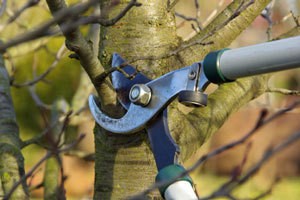
Knowing what and when to prune is essential to maintaining a healthy and aesthetically pleasing garden. Here are some general guidelines on what to prune and when to prune it.
Fruit Trees: Fruit trees should always be pruned before buds start to swell, so usually in late winter or early spring. To maintain shape and encourage air circulation within the canopy, remove any branches growing inward or those growing vertically.
Evergreen Trees: Evergreen trees seldom need pruning. If you prune, wait until after the tree has completed substantial new growth, or you may end up having to prune it again-usually late spring or early summer.
Deciduous Trees: Deciduous trees also seldom need pruning. If pruning is needed to maintain shape, it should be done in mid to late winter while the tree is dormant.
Berry Bushes: Berry bushes are usually best pruned in late fall or early winter. Regular pruning to maintain shape can be done throughout the season, but is best done immediately after harvesting to minimize production loss.
Evergreen Shrubs: Evergreen shrubs don't flower, but some produce cones. Typically, it's best to prune evergreen shrubs between late winter and early spring-after they produce cones.
Deciduous Shrubs: Let the flowers guide you. It's best to prune shrubs back immediately after they flower (usually late spring or summer).
Rosebushes: Older shoots and those turned inward should be pruned by late winter-early spring at the latest. Cut remaining 4 to 8 canes to a length of 12 to 24 inches. Ideally, cuts should be made within an inch above a bud or strong shoot.
Fruit Bearing: for pruning purposes, defined as any tree or shrub that bears fruit
Deciduous: any perennial plant, tree, or shrub that loses all of its foliage for part of the year
Evergreen: any tree, shrub, or plant that bears foliage throughout the year
Maintenance Pruning: Regular maintenance pruning is usually done annually in order to maintain the general shape and hygiene of plant.
Formative Pruning: Formative pruning is a technique usually reserved for young plants, plants that have outgrown their space, or for plants remaining after another plant in close proximity has been removed (to prevent growth from looking lopsided). Essentially, it's pruning to train or correct shape.
Pruning for Rejuvenation: Occasionally, it's necessary to prune old shrubs to renew their vigor. Some shrubs respond well to hard pruning, while others are better rejuvenated over a period of 2 to 3 years. If your shrub has not been pruned regularly, go slowly and space pruning over several seasons. Select no more than 1/4 to 1/3 of the oldest wood in a single season.
Pruning for Pests and Disease: Just like it sounds, this type of pruning is done in response to the outbreak of disease or pests.
*These can be pruned hard, but often take years to recover.

About The Author: Ellen Brown is an environmental writer and photographer and the owner of Sustainable Media, an environmental media company that specializes in helping businesses and organizations promote eco-friendly products and services.
Add your voice! Click below to comment. ThriftyFun is powered by your wisdom!
Just wanted to say thanks for the useful information! I have always been confused and intimidated by pruning, and your articles explain the process so clearly and simply!
Laura
I may have missed this but all spring flowering trees, as well as shrubs (which were mentioned) should be pruned right after the flowers fade or not at all. This includes Azaleas, Camellias, and others. Something that drives me crazy is crepe murder. It's utter foolishness to cut back a 30 foot tree to make it a shrub and those knuckles are hideous. If you want a small tree, buy one. Topping any tree isn't going to cause it to produce more flowers, but will certainly cause sucker growth, and shorten the life of the tree.
Oh wow, that's quite fascinating to know that fruit trees should be pruned and trimmed before the buds start to swell. This sure would be something to be sharing to my wife since it's what she's been wanting to know. Well, since I bought her an apple and a cherry tree she's been wanting to know how to start pruning them.
Thank you very much, Ellen!
Add your voice! Click below to comment. ThriftyFun is powered by your wisdom!